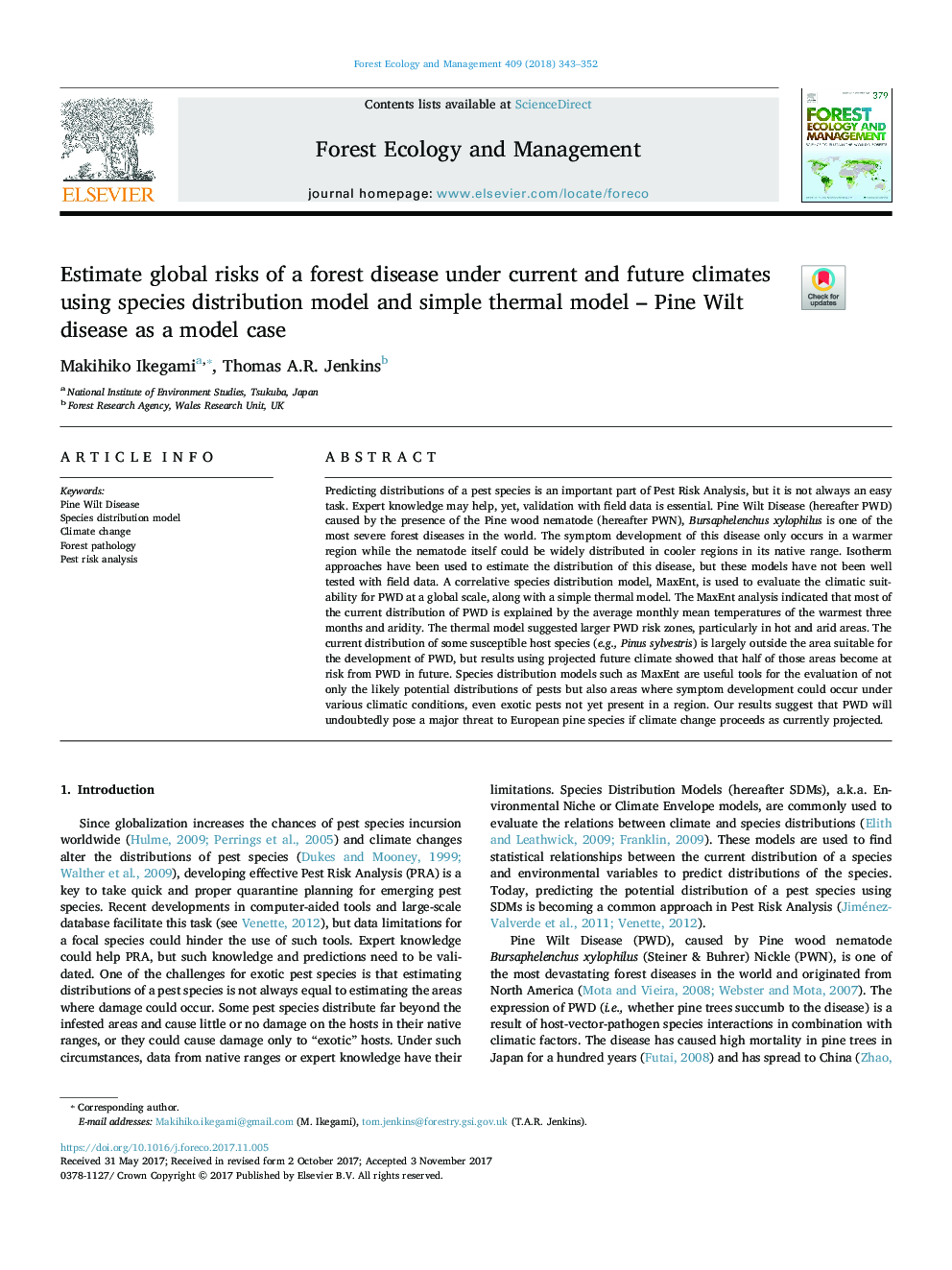| Article ID | Journal | Published Year | Pages | File Type |
|---|---|---|---|---|
| 6541908 | Forest Ecology and Management | 2018 | 10 Pages |
Abstract
Predicting distributions of a pest species is an important part of Pest Risk Analysis, but it is not always an easy task. Expert knowledge may help, yet, validation with field data is essential. Pine Wilt Disease (hereafter PWD) caused by the presence of the Pine wood nematode (hereafter PWN), Bursaphelenchus xylophilus is one of the most severe forest diseases in the world. The symptom development of this disease only occurs in a warmer region while the nematode itself could be widely distributed in cooler regions in its native range. Isotherm approaches have been used to estimate the distribution of this disease, but these models have not been well tested with field data. A correlative species distribution model, MaxEnt, is used to evaluate the climatic suitability for PWD at a global scale, along with a simple thermal model. The MaxEnt analysis indicated that most of the current distribution of PWD is explained by the average monthly mean temperatures of the warmest three months and aridity. The thermal model suggested larger PWD risk zones, particularly in hot and arid areas. The current distribution of some susceptible host species (e.g., Pinus sylvestris) is largely outside the area suitable for the development of PWD, but results using projected future climate showed that half of those areas become at risk from PWD in future. Species distribution models such as MaxEnt are useful tools for the evaluation of not only the likely potential distributions of pests but also areas where symptom development could occur under various climatic conditions, even exotic pests not yet present in a region. Our results suggest that PWD will undoubtedly pose a major threat to European pine species if climate change proceeds as currently projected.
Keywords
Related Topics
Life Sciences
Agricultural and Biological Sciences
Ecology, Evolution, Behavior and Systematics
Authors
Makihiko Ikegami, Thomas A.R. Jenkins,
